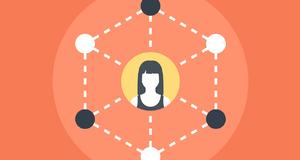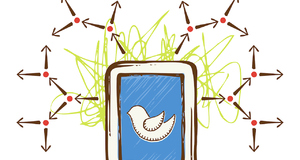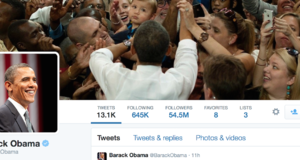From Elon Journal of Undergraduate Research in Communications VOL. 3 NO. 2The Invisible Become Visible: An Analysis of How People Experiencing Homelessness Use Social Media
IN THIS ARTICLE
KEYWORDS
AbstractThis research examined how people experiencing homelessness use the social media platforms of blogs, Facebook, Twitter, and LinkedIn. Through 15 interviews at a day shelter in a central North Carolina city, the author discovered that people experiencing homelessness use Facebook for three main reasons: to remain connected with family and friends; to find support; and to share ideas in a safe space. This research conclude that homeless service providers should offer classes that teach their clients how to use social media websites. Also, people experiencing homelessness may be more likely to use a wider variety of social media websites if service providers post valuable information for their clients on those web pages. I. Introduction@beckyblanton wrote in a reflection, "Homeless people have one story—or so people think. No one bothers to stop and ask the homeless for their story or even expects to see a story other than, 'I'm broke, addicted, mentally ill, angry, hurt and dangerous.' It's up to you to add to, or go beyond that negative story. If you ever wanted the keys to life, to possibility, to freedom, social media and a blog are those keys. Get them. Use them. They can change your world." (Horvath, 2010, para. 3) This research examined how people experiencing homelessness use the social media platforms of blogs, Facebook, Twitter, and LinkedIn. It also studied how this group of people bridges the digital divide by gaining access to computers and the Internet. This research was conducted through a series of interviews with clients at The Center, a day shelter in a central North Carolina city. (The name of the center and its location has been changed in order to protect the privacy of the respon-dents.) This research is important because people experiencing homelessness have been largely misunderstood and ignored. By understanding how members of this population use social media, the community can develop a deeper insight into the lives of people experiencing homelessness and better understand their stories. We rarely hear homeless individuals' voices. Instead, others speak for them, creating a stereotypical image of a "homeless person." People experiencing homelessness are changing this image through their use of social media. Mark Horvath, founder of InvisiblePeople.tv and the We Are Visible network, has empowered homeless and impoverished individuals by teaching them how to share their voices, stories, and needs viathe Internet. After experiencing homelessness, Horvath discovered that social media provides innumerous resources to homeless individuals that offline resources cannot. These resources include locating services, finding support, sharing stories, and obtaining jobs (Tabb, 2011). Horvath said 100 percent of the sheltered homeless he has met were using Facebook (Gustafson, 2011). Therefore, he thought it was necessary to create WeAreVisible.com to teach people experiencing homelessness about the benefits of using other social media outlets. He launched this website in September 2010 after receiving a Pepsi Refresh grant. On WeAreVisible.com, Horvath provides simple tutorials forpeople experiencing homelessness on how to use Gmail, WordPress, Facebook, and Twitter as survival tools ("Social media," 2010). By encouraging this population to use social media, Horvath has helped housed individuals see past the cardboard sign by providing real insight into the problems that homeless individuals face every day (Tabb, 2011). Ben Bates, a man experiencing homelessness who is known to the Twitter world as @cardboardblog, said, "Without social media I would feel like a complete outcast of society" (Horvath, 2010, para. 7). In addition to providing a platform to share individual stories, social media has helped people find housing and the necessary resources to get back on their feet. Rd Plasschaert, a woman experiencing homelessness from California, said, "Quite frankly, I would be sleeping on the streets if I hadn't opened myself upto social media. I'm off the streets because of it . . . People, do you realize what we have available to us?" ("Social media," 2010, para. 11). Finally, people experiencing homelessness use social media to connect to family and gain support. Daniel Morales acquired national attention when he used Facebook to locate his daughter, Sarah, whom he had not seen in 11 years (Adams, 2011). Likewise, Elisa Melo uses Facebook to talk to her family in Brazil twice per week. After fleeing an abusive relationship, she entered a shelter. "That helps a lot—reading the stuff they're writing me, telling me to go on and to keep myself healthy," Melo said (Adams, 2011, para. 8). There are many newspaper reports about the use of social media by people experiencing homelessness. However, little academic research has been conducted about how this population accesses computers and why they use these alternative media outlets. II. Literature ReviewResearch has been conducted about how the media portray homelessness. However, little research has examined how people experiencing homelessness engage with the media, particularly social media. Social media has helped homeless individuals become an increasingly well-connected group (Kline, 2005). Therefore, research about how people experiencing homelessness engage with and access social media is important because it will help the community understand how this population uses social media to positively impact their lives and share their stories. Several studies reported that people experiencing homelessness access computers at public and university libraries, social service agency centers, coffee shops, and hotel lobbies (Eyrich-Garg, 2011). In addition, homeless shelters have responded to the web-based needs of their clients by creating computer labs (Taylor, 2011). The location and context of a computer lab is important to people experiencing homelessness and determines whether or not they use that resource, especially in libraries (Bure, 2005; Holt, 2010). Middle-aged, educated homeless individuals are more likely to use computers and social media than their older, less-educated counterparts (Taylor, 2011; Le Dantec, 2008a). People experiencing homelessness use computers to remain socially connected with others, to find jobs, housing and leisure opportunities, and to locate other resources (Eyrich-Garg, 2011; Roberson, 2010). Internet technology provides people experiencing homelessness with the opportunity to interact with the larger community, including housed individuals and politicians (Roberson, 2010). Computers build life skills by helping people experiencing homelessness work toward achieving personal goals, such as managing time, doing research, writing resumes, and dealing with a fear of learning new skills. Researchers found the increased self-esteem that accompanies learning to use a computer helps people experiencing homelessness see themselves as capable individuals with a vision of life other than homelessness (Swenson Miller, 2005). Researchers questioned if the rise in digital technology will increase the digital divide or help bridge the gap by integrating impoverished individuals into mainstream society. Christopher Le Dantec and W.K. Edwards (2008) applied the digital divide to the homeless community. The researchers conducted three interviews with 28 homeless individuals at outreach centers. They found there is a digital divide within many homeless communities as some people experiencing homelessness are disinterested or do not know how to use computers, while others are skillful at using computers and other digital technologies. To remain connected, some people experiencing homelessness have created blogs. Researchers have discovered that there are four benefits to writing and maintaining blogs to homeless individuals. First, blogs provide an outlet for people experiencing homelessness to communicate with others on their ownterms. Second, blogs are a space where stereotypes are challenged. Third, blogs act as a support system. Finally, blogs are emotionally beneficial because they help people experiencing homelessness stay connected (Yost, 2009). People experiencing homelessness have access to computers to blog and use social media. Karin M. Eyrich-Garg (2011) studied computer use among 100 unsheltered homeless men and women in Philadelphia, Pennsylvania. She discovered that almost half (47%) of her sample used a computer and cell phone in the past 30 days for a variety of reasons, including job searching and connecting to others. Eyrich-Garg foundthat people experiencing homelessness perceive themselves as having access to a social network through digital technology and therefore have better physical and mental health in addition to lower levels of victimization. She concluded that healthcare providers could use technology as a cost-effective way of communicating with people experiencing homelessness because technology can facilitate prevention and intervention strategies with this computer-connected population. Other researchers echoed the benefits of social support groups. Stephen Hwang (2009) and his team of researchers sampled 544 homeless adults and discovered that there is an increased need for services that encourage the integration of people experiencing homelessness into social networks. These social networks can be in person or on the Internet. Another common thread in the literature is the importance of staying connected to family, friends, and the community. Eyrich-Garg reported that networking websites could help people experiencing homelessness meet their social needs while giving them a stable place to portray themselves. Le Dantec and Edwards also reported that these social connections help people experiencing homelessness survive on the streets. Losing contact with these support groups exacerbates the emotional stress of being homeless. Technology, such as cell phones, is also correlated with identity and self-esteem. Le Dantec reported that cell phones are important to managing the presentation of self. For people experiencing homelessness, having a cell phone helps comfort their concerned friends and family. In addition, it is a way to be in controlof others' perceptions because a cell phone number reassures people experiencing homelessness that their cell phone is not associated with their current situation. This reassurance provides them with a sense of hope and a vision for a life that does not involve being homeless. Even though cell phones are the preferred wayto keep in touch with others, owning a cell phone is a challenge since cell phones need to be recharged, are expensive, and can also be lost or stolen (Bure, 2005; Le Dantec, 2008b). Clare Bure (2005) studied the use of cell phones by people experiencing homelessness in central Scotland. Her research illustrates the complexities of promoting inclusion into mainstream society through technology. Bure reported that people experiencing homelessness could be digitally included while remaining socially excluded because they use communication tools in ways that are relevant to their own lives. However, Bure noted that digital technology is helpful because it provides access to practical information on affordable housing, jobs, healthcare, and other topics. Some researchers focused on the challenges that people experiencing homelessness face with computer and Internet use. Many do not have the necessary literacy and technical skills to access the Internet and computers (Bure, 2005; Le Dantec, 2008a). Lack of access is the biggest deterrent. Shelter computersare only available at certain times, public library computers are often booked, and Internet cafes are expensive (Taylor, 2011). In addition, many homeless support workers do not know where free Internet and computer access points are located so they cannot encourage their clients to use these resources (Bure, 2005). Finally, safety is a major concern because laptops and other electronic equipment can be stolen (Roberson, 2010). Overall technology provides the opportunity for productive interventions in homeless individuals' lives. Social support networks result in a better life and health for people experiencing homelessness. The posi-tive benefits that technology brings to this population causes researchers to seriously think about the digital divide. While there are numerous venues for free Internet access, such as shelters and libraries, there is also an increased need for people experiencing homelessness to own a laptop or Smartphone. Since many cannot afford these digital technologies, there is a possibility that vulnerable populations will fall through the cracks and the digital divide will increase. This research examined how people experiencing homelessness use social media and the benefits these outlets provide for members of this population. It focused on what information they seek online and how they remain connected to society and share their voices by engaging with blogs, Facebook, Twitter, and LinkedIn. Finally, the research discussed how people experiencing homelessness gain the necessary skills to effectively use these social media outlets and the Internet.Continued on Next Page » Suggested Reading from Inquiries Journal
Inquiries Journal provides undergraduate and graduate students around the world a platform for the wide dissemination of academic work over a range of core disciplines. Representing the work of students from hundreds of institutions around the globe, Inquiries Journal's large database of academic articles is completely free. Learn more | Blog | Submit Latest in Business & Communications |



















